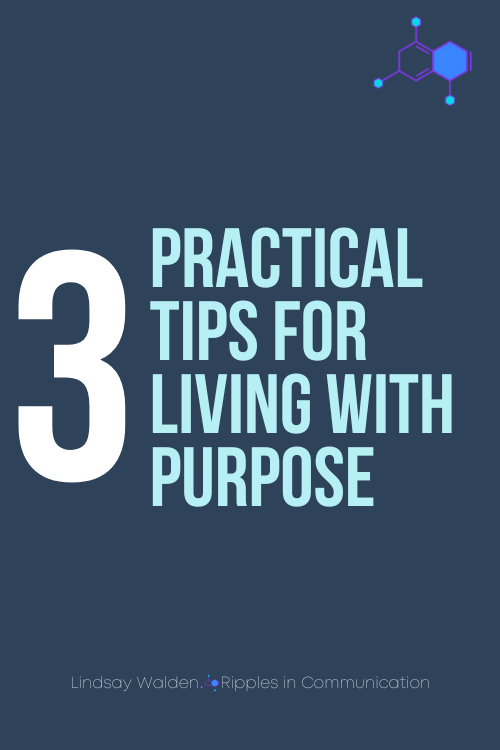Finding Your Purpose: What You Want, Why It Matters, and How to Start
You’re doing everything “right”—checking the boxes, staying busy, showing up. But something still feels off. There’s a quiet restlessness, a sense that you’re not quite aligned with the life you’re meant to be living.
If that sounds familiar, you’re not alone. A surprising number of people don’t struggle with effort—they struggle with direction.
In therapy, this often shows up as clients saying things like: “I’m not unhappy… but I’m not fulfilled either.” “I know I want more out of life—but I don’t know what that means.” “I feel like I’m living on autopilot.”
The truth is, many of us aren’t taught how to create a life that feels meaningful—we’re taught how to manage the one we were handed. But your life isn’t meant to be a performance. It’s meant to be a reflection of what deeply matters to you.
And that’s where purpose and vision come in—not as pressure-filled “find your passion” clichés, but as grounded tools for clarity, alignment, and lasting fulfillment.
Before you read on, make sure you grab your FREE CNT Toolkit Sampler!
Have you grabbed your FREE CNT Toolkit Sampler yet? It’s packed with science-backed tools designed to help you regulate emotions, manage stress, and develop deep self-awareness. If you’ve ever felt overwhelmed by your reactions or stuck in negative thought patterns, this toolkit will give you the proven strategies I use with clients to help them strengthen emotional neutrality, rewire unhelpful responses, and build lasting resilience. Inside, you’ll find practical exercises and guided reflections to help you navigate challenges with clarity and confidence. Enter your email below, and I’ll send it straight to your inbox!
Why Purpose and Vision Actually Matter
Living with purpose isn’t about having all the answers—it’s about asking the right questions. Questions like:
What do I value?
What do I want to experience more of?
What do I want my life to stand for?
These aren’t just feel-good reflection questions—they’re deeply connected to how your brain processes motivation, resilience, and well-being. Neuroscience research has shown that people with a sense of purpose experience:
Greater emotional regulation
Reduced symptoms of anxiety and depression
Stronger resilience through life’s challenges
Increased satisfaction and longevity
Why? Because purpose gives your brain a map. When you know where you’re headed, even setbacks become part of the journey—not signals to quit.
The Purpose & Vision Section of the CNT Self-Discovery Puzzle
That’s why the Purpose & Vision section of the CNT Self-Discovery Puzzle (Get it inside the FREE CNT Toolkit Sampler) is such a vital tool—it walks you through the deep, layered work of reflection, dream mapping, and action planning. Not in an overwhelming “you need to know everything right now” way, but in a practical, neuroscience-informed framework that brings clarity and momentum.
Here’s how it works:
Step 1: Imagine Your Ideal Life
Start by asking yourself: What three words describe your ideal life?
This simple prompt helps uncover your core emotional values—not just what you want to do, but how you want to feel while doing it. Are your words peaceful, creative, free, adventurous, rooted, connected, joyful?
Once you have them, explore: What would it actually look like to live a life that aligns with those feelings? This gives your nervous system something tangible to visualize—because the brain can’t pursue what it can’t picture.
Step 2: Identify the Dreams You’ve Put on Pause
Now ask: What’s one goal or dream you haven’t started pursuing yet—and why?
This question often brings up buried desires—things you’ve quietly set aside because they didn’t feel realistic or convenient. But your brain stores dreams, even the ones you try to ignore. And reflecting on them helps you reconnect with the parts of yourself that still believe something more is possible.
One small shift in how you approach those dreams could unlock momentum you didn’t realize was possible.
Step 3: Take One Small Aligned Action
Once you’ve identified what you want, the next step is to move toward it—in real life. Not with a full 10-step plan, but with one micro-action.
Ask yourself: What is one small action I could take today that brings me closer to my vision?
That might look like:
Reaching out to someone in a field you’re curious about
Setting aside 15 minutes to write, create, or learn
Saying no to something that drains you, so you can say yes to something that fuels you
Tiny shifts compound. Purpose isn’t created in giant leaps—it’s revealed through consistent, aligned action.
Real-Life Story: How Laura Turned Reflection Into Real Change
Laura came into therapy feeling successful on the outside but restless on the inside. She had always dreamed of starting her own business, but after years in corporate leadership, the dream felt distant and impractical.
Through the Purpose & Vision section of the CNT Self-Discovery Puzzle, she identified entrepreneurship as a core part of her purpose. Not because she wanted to be her own boss for the title—but because she craved autonomy, impact, and creative freedom.
She started small: attending one networking event, writing a vision statement, building her business plan after work hours.
Within a year, Laura launched her business—one rooted in her values and vision. And while the path hasn’t been without challenges, she now feels aligned in a way that no paycheck ever gave her.
3 Practical Tips for Living with Purpose
Finding your purpose isn’t a one-time journal entry. It’s a practice—a way of relating to yourself and your choices through the lens of clarity and meaning.
Here are a few therapist-approved tips to keep you aligned:
1. Set Clear, Flexible Goals
Break your big vision into tangible, measurable actions—but give yourself room to evolve. Your goals should stretch you, not strangle you.
2. Revisit Your Vision Regularly
Your purpose may not change, but your priorities will. Reflect often. Ask yourself: Am I still moving toward what matters most?
3. Stay Open to Redefinition
Just because something used to be part of your vision doesn’t mean it still is. Give yourself permission to release old goals that no longer fit the person you’re becoming.
Why Purpose Work Is Also Brain Work
This isn’t just mindset—it’s neuroscience.
When you define what you want and take intentional action toward it, you’re strengthening the prefrontal cortex (the part of your brain that governs planning, decision-making, and goal-setting). At the same time, you’re reducing activation in the amygdala (the fear center), which helps you take action without getting hijacked by overwhelm or self-doubt.
Put simply: clarity calms your nervous system, and action builds confidence.
This is why even a single aligned step can pull you out of confusion—and into momentum.
Final Thoughts: Purpose Isn’t a Destination—It’s a Direction
You don’t need to know your entire life’s mission today. You just need to start tuning in.
When you reflect on your values, get honest about your desires, and start making small, meaningful moves in the direction of your vision—you stop drifting and start creating.
And that’s when everything starts to feel different. Not perfect. But purposeful.
If you’re ready to do this work in a guided, neuroscience-based way, download the CNT Toolkit Sampler and explore the Purpose & Vision section of the CNT Self-Discovery Puzzle. Inside, you’ll find structured prompts and practical tools designed to help you move from vague longing to clear, empowered action.







